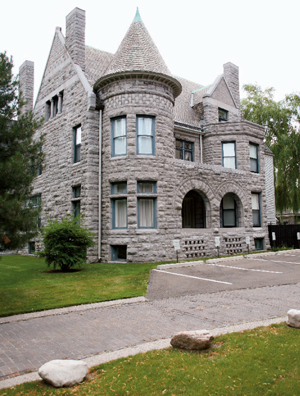
In The 1870s, architect Henry Hobson Richardson developed his own take on the Romanesque architecture that had been a popular choice for public and commercial buildings earlier in the century. Though Richardson built few homes in the style before his premature death in 1886, posthumous interest in his work led to a revival of the form just before the turn of the century.
With elements borrowed from late Gothic Revival and early Christian influences, the homes were always of solid-masonry construction and, therefore, more expensive than other late Victorian styles. Because of this, they were never common and are most frequently found in the northeast. Nearly 75 percent of Richardsonian Romanesque homes feature towers — most commonly round, though polygonal and squared versions can be found. Wide, rounded arches are another key feature of the style, as is rough-faced squared stonework.
|
|
|






